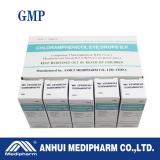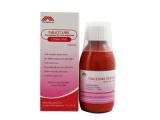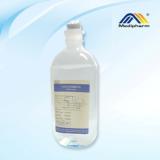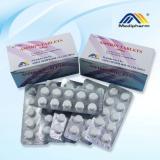Indications:
Treatment of infections of the external structures of the eye and its adnexa caused by susceptible bacteria. Such infections include conjunctivitis, keratitis, kerato-conjunctivitis, corneal ulcers, blepharitis and blepharo-conjunctivitis, acute meibomianitis, episcleritis and dacryocystitis. It may be used for the prevention of ocular infection after: removal of a foreign body, burns or lacerations of the conjunctiva; damage from chemical or physical agents and after ocular surgery. Also indicated for the treatment of otitis externa.
Contra-indications:
Should not be administered to patients with a known allergy to gentamicin and other aminoglycosides. Evidence exists that Gentamicin may cause neuromuscular blockade and is therefore contra-indicated in myasthenia gravis and related conditions.
Adverse Effects:
There are no modern clinical studies available that can be used to determine the frequency of undesirable effects. Therefore, all the undesirable effects listed are classed as “frequency unknown”.
Eye Disorders:
Local sensitivity; blurred vision, eye irritation, burning sensation, stinging sensation, itching (eye pruritus)
Ear & Labyrinth Disorders:
Local sensitivity; ototoxicity; vestibular disorder; hearing loss
Skin & Subcutaneous tissue Disorders:
Burning sensation, stinging, itching (pruritus); dermatitis.
Renal & Urinary Disorders:
Nephrotoxicity; acute renal failure
In the event of irritation, sensitivity or super-infection, treatment should be discontinued and appropriate therapy instituted.
Drug Interactions:
Potent diuretics such as ethacrynic acid and frusemide are believed to enhance any risk of ototoxicity whilst amphotericin B, cisplatin and cyclosporin and cephalosporins are potential enhancers of nephrotoxicity.
Concurrent use with other potentially nephrotoxic or ototoxic drugs should be avoided unless considered essential by the physician.
Neuromuscular blockade and respiratory paralysis have been reported in patients from the administration of aminoglycosides to patients who have received curare-type muscle relaxants during anaesthesia.
Precautions & Warning:
Avoid prolonged use. Prolonged use may lead to skin sensitisation and the emergence of resistant organisms. Cross-sensitivity with other aminoglycoside antibiotics may occur. In severe infections, topical use of gentamicin should be supplemented with appropriate systemic antibiotic treatment.
Gentamicin may cause ototoxicity (vestibular damage; irreversible partial or total deafness) when given systemically or when applied topically to open wounds or damaged skin. This effect is dose-related and is enhanced by renal and/or hepatic impairment and is more likely in the elderly.
Topical application of gentamicin into the middle ear also carries a theoretical risk of ototoxicity in susceptible patients.
Concurrent use with other potentially nephrotoxic or ototoxic drugs should be avoided unless considered essential by the physician.
Use in Pregnancy and Nursing Mothers:
There are no proven cases of intrauterine damage caused by gentamicin. However, in common with most drugs known to cross the placenta, usage in pregnancy should only be considered in life-threatening situations where expected benefits outweigh possible risks. In the absence of gastrointestinal inflammation the amount of gentamicin ingested from the milk is unlikely to result in significant blood levels in breast-fed infants.
Storage instructions:
Store below 25℃. Protect from moisture. Keep out of reach of children.
Treatment of infections of the external structures of the eye and its adnexa caused by susceptible bacteria. Such infections include conjunctivitis, keratitis, kerato-conjunctivitis, corneal ulcers, blepharitis and blepharo-conjunctivitis, acute meibomianitis, episcleritis and dacryocystitis. It may be used for the prevention of ocular infection after: removal of a foreign body, burns or lacerations of the conjunctiva; damage from chemical or physical agents and after ocular surgery. Also indicated for the treatment of otitis externa.
Contra-indications:
Should not be administered to patients with a known allergy to gentamicin and other aminoglycosides. Evidence exists that Gentamicin may cause neuromuscular blockade and is therefore contra-indicated in myasthenia gravis and related conditions.
Adverse Effects:
There are no modern clinical studies available that can be used to determine the frequency of undesirable effects. Therefore, all the undesirable effects listed are classed as “frequency unknown”.
Eye Disorders:
Local sensitivity; blurred vision, eye irritation, burning sensation, stinging sensation, itching (eye pruritus)
Ear & Labyrinth Disorders:
Local sensitivity; ototoxicity; vestibular disorder; hearing loss
Skin & Subcutaneous tissue Disorders:
Burning sensation, stinging, itching (pruritus); dermatitis.
Renal & Urinary Disorders:
Nephrotoxicity; acute renal failure
In the event of irritation, sensitivity or super-infection, treatment should be discontinued and appropriate therapy instituted.
Drug Interactions:
Potent diuretics such as ethacrynic acid and frusemide are believed to enhance any risk of ototoxicity whilst amphotericin B, cisplatin and cyclosporin and cephalosporins are potential enhancers of nephrotoxicity.
Concurrent use with other potentially nephrotoxic or ototoxic drugs should be avoided unless considered essential by the physician.
Neuromuscular blockade and respiratory paralysis have been reported in patients from the administration of aminoglycosides to patients who have received curare-type muscle relaxants during anaesthesia.
Precautions & Warning:
Avoid prolonged use. Prolonged use may lead to skin sensitisation and the emergence of resistant organisms. Cross-sensitivity with other aminoglycoside antibiotics may occur. In severe infections, topical use of gentamicin should be supplemented with appropriate systemic antibiotic treatment.
Gentamicin may cause ototoxicity (vestibular damage; irreversible partial or total deafness) when given systemically or when applied topically to open wounds or damaged skin. This effect is dose-related and is enhanced by renal and/or hepatic impairment and is more likely in the elderly.
Topical application of gentamicin into the middle ear also carries a theoretical risk of ototoxicity in susceptible patients.
Concurrent use with other potentially nephrotoxic or ototoxic drugs should be avoided unless considered essential by the physician.
Use in Pregnancy and Nursing Mothers:
There are no proven cases of intrauterine damage caused by gentamicin. However, in common with most drugs known to cross the placenta, usage in pregnancy should only be considered in life-threatening situations where expected benefits outweigh possible risks. In the absence of gastrointestinal inflammation the amount of gentamicin ingested from the milk is unlikely to result in significant blood levels in breast-fed infants.
Storage instructions:
Store below 25℃. Protect from moisture. Keep out of reach of children.

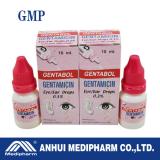


 By certification
By certification 
